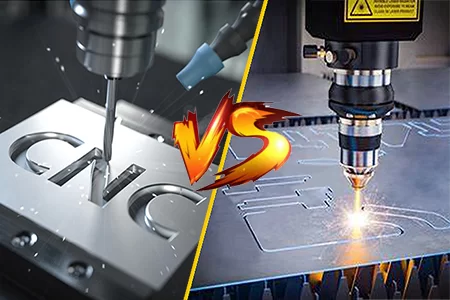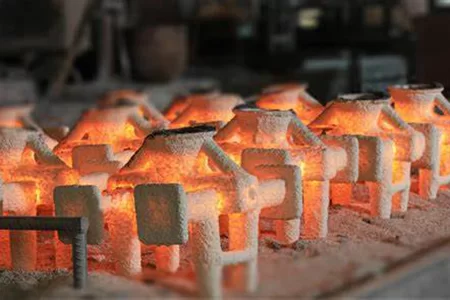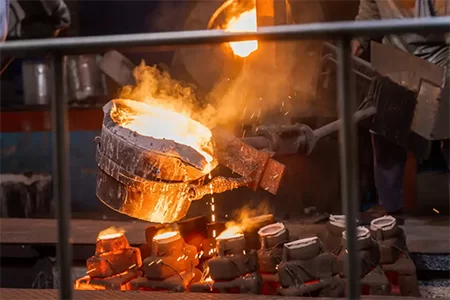
What Should Casting Manufacturers Pay Attention to in Production Management?
-
Home>
-
Blog>
-
Technology>
What Should Casting Manufacturers Pay Attention to in Production Management?
Casting manufacturers are engaged in a complex production process that encompasses multiple stages and requires meticulous management to ensure product quality and production efficiency. Here are the key aspects of management that casting manufacturers need to pay attention to during the production process:
Design and Development Phase
During the design and development stage, it's crucial to ensure the rationality of the product design and its manufacturability. Designers should take into account the characteristics of the casting and the requirements of the manufacturing process. They need to collaborate closely with process engineers and mold makers. By doing so, they can guarantee that the product design meets the production requirements. For example, when designing a complex automotive casting part, designers need to consider how the part will be cast, including the placement of gates and risers, to ensure proper filling and solidification during the casting process.
Material Selection and Procurement
The quality of castings is significantly influenced by the materials used. Therefore, when selecting and purchasing materials, strict control over the quality and performance of the materials is essential. Manufacturers should establish long - term partnerships with reliable suppliers. They must procure materials in strict accordance with relevant standards. Additionally, thorough inspection and testing of the materials are necessary. For instance, before using a batch of steel for casting, it should be tested for its chemical composition, mechanical properties, and purity to ensure it meets the requirements for the intended casting product.
Mold Manufacturing
Molds play a vital role in the casting production process. The manufacturing quality and service life of the mold directly impact the quality of the castings and production efficiency. Casting manufacturers should scientifically and rationally plan the mold manufacturing process. They can adopt advanced mold - making technologies, such as 3D printing for mold prototypes in some cases. By strictly controlling the dimensions and quality of the mold, they can ensure its accuracy and stability. A well - made mold can reduce the occurrence of defects like misalignment and dimensional inaccuracies in the castings.
Casting Process Control
Casting is the core process in casting manufacturing, and strict control of casting process parameters is required. These parameters include pouring temperature, casting pressure, pouring speed, holding pressure time, and holding pressure. The rational selection and precise control of the casting process can improve the microstructure and properties of the castings and reduce the defect rate. For example, if the pouring temperature is too high, it may lead to excessive shrinkage and porosity in the casting; if it is too low, the casting may have incomplete filling defects.
Melting and Pretreatment before Casting
Melting is an important stage in the casting production process. The selection of melting materials and the control of pretreatment before casting are directly related to the quality of the castings. During the melting process, parameters such as furnace temperature, furnace pressure, and holding time need to be controlled to ensure the quality and stability of the melt. For example, in the melting of aluminum alloys, controlling the furnace temperature accurately can prevent the oxidation of aluminum and ensure the purity of the melt, which is crucial for the quality of the final casting.
Slag and Gas Removal
Slag and gas removal are key steps in the casting production process. These processes can effectively reduce defects such as sand holes, pores, and inclusions in the castings. Casting manufacturers should adopt appropriate slag - and gas - removal equipment and processes. For example, using a degassing unit to remove dissolved gases from the melt and a slag - skimming device to remove slag floating on the surface of the melt can greatly improve the quality and performance of the castings.
Heat Treatment
Heat treatment is an integral part of casting processing. It adjusts the structure and properties of the material to meet the usage requirements. Casting manufacturers should select appropriate heat - treatment processes according to the materials of the castings and specific requirements. They need to strictly control the temperature, time, and cooling rate during heat treatment to ensure the effectiveness of heat treatment and the quality of the castings. For example, quenching and tempering processes can significantly improve the strength and toughness of steel castings, but precise control of process parameters is required to achieve the desired results.
Machining and Surface Treatment
After the casting is completed, machining and surface treatment are usually required to meet the designed dimensional accuracy and surface finish. Casting manufacturers should establish suitable machining and surface - treatment processes. By using advanced machining equipment and techniques, they can improve the machining accuracy and surface quality of the castings. For example, precision machining centers can achieve high - precision machining of castings, and surface - treatment methods like electroplating or painting can enhance the corrosion resistance and appearance of the castings.
Inspection and Testing
After the casting production is completed, strict inspection and testing are necessary to ensure that the product quality meets the requirements. Casting manufacturers should establish a comprehensive inspection and testing system, which includes quality inspection of raw materials, inspection of intermediate products, and inspection of finished products. They should use appropriate inspection and testing methods and equipment, and analyze and process the inspection and testing data. For example, non - destructive testing methods such as ultrasonic testing and X - ray inspection can be used to detect internal defects in castings, and mechanical property testing can be used to evaluate the strength and hardness of the castings.
Process Control and Improvement
Casting manufacturers should establish a complete production management system and quality management system, and implement process control and improvement measures. This includes formulating process specifications and operating procedures, establishing a process control and recording system, setting up a quality monitoring and improvement mechanism, and conducting continuous process analysis and improvement activities. By doing so, they can improve the production efficiency and quality of castings. For example, by analyzing the data from the process control system, manufacturers can identify areas for improvement, such as optimizing the casting process parameters or upgrading the equipment, to enhance the overall competitiveness of the enterprise.
In conclusion, casting manufacturers need to pay attention to multiple aspects of management during the production process, covering design and development, material selection and procurement, mold manufacturing, casting process control, melting and pretreatment, slag and gas removal, heat treatment, machining and surface treatment, inspection and testing, as well as process control and improvement. Only through scientific management and control can the quality and production efficiency of castings be ensured, and the competitiveness of the enterprise be enhanced.
Article Navigation
Article Navigation
Industries
Foundries
-

March.25, 2025
CNC Cutting vs. Laser Cutting: Which One is Right for Your Project?
READ MORE
-

March.18, 2025
Surface Roughness Comparison of Castings with Different Materials and Processes
READ MORE
-

March.10, 2025
Achieving Precision in Metal Casting: Key Strategies for High-Quality Casting Parts
READ MORE
-

March.03, 2025
Addressing Defects in Castings: A Comprehensive Guide
READ MORE
-

February.25, 2025
How to Compare Product Quality Between Different Casting Foundries?
READ MORE
-

February.14, 2025
What Are The Metal Casting Materials Commonly Used in Foundries?
READ MORE








